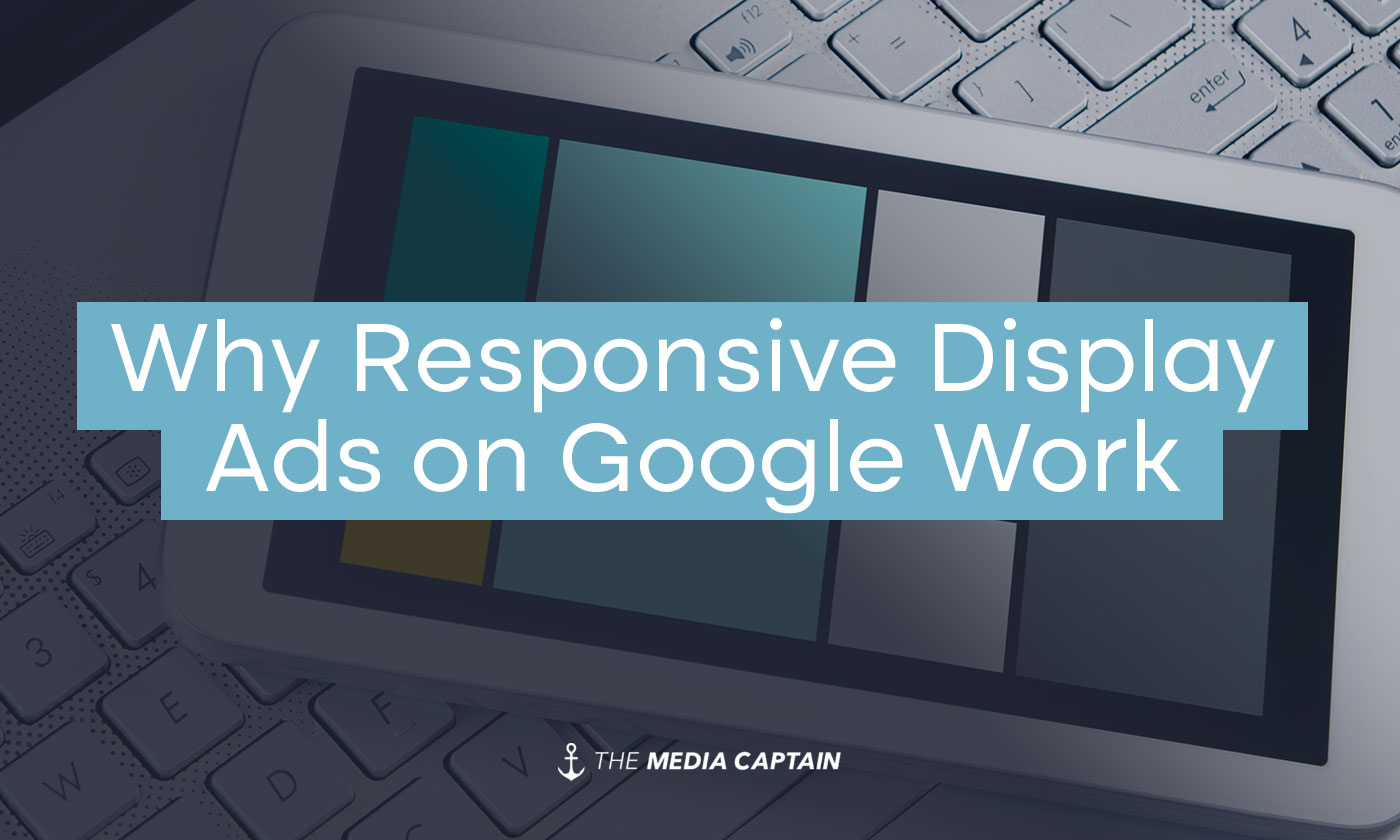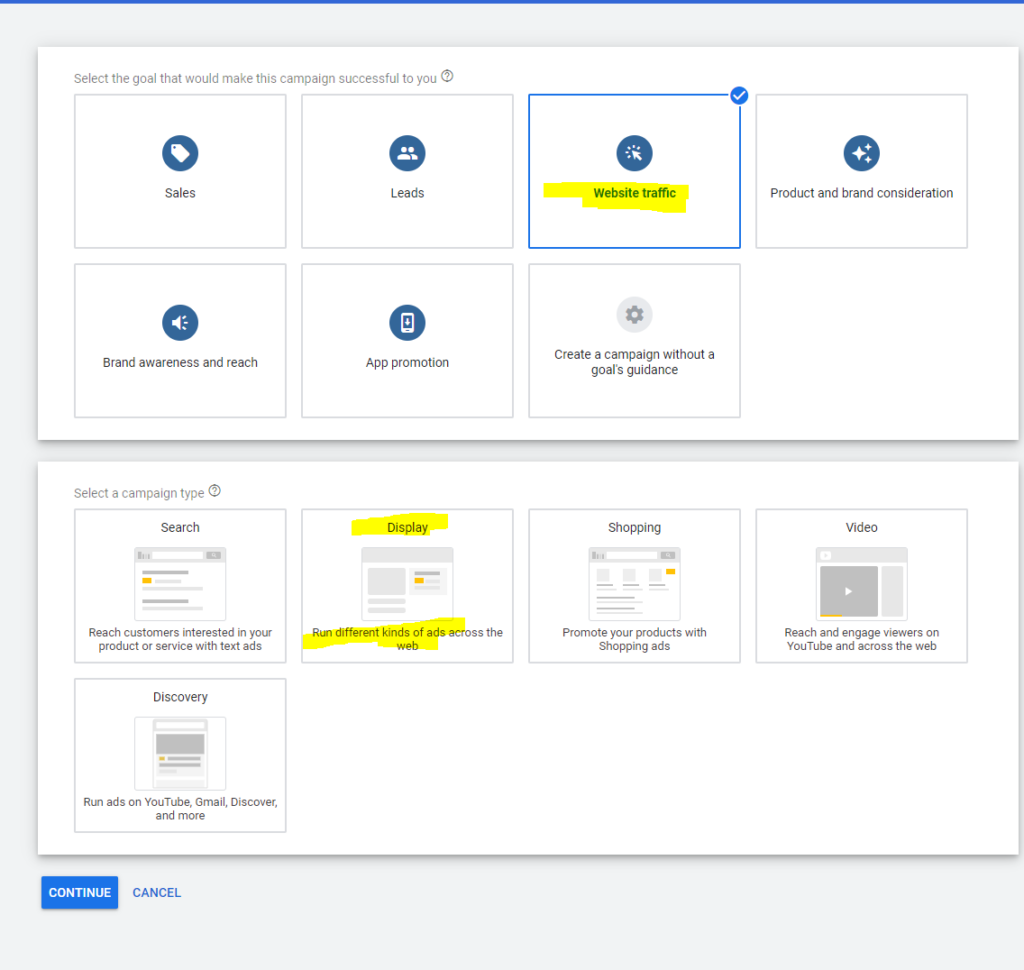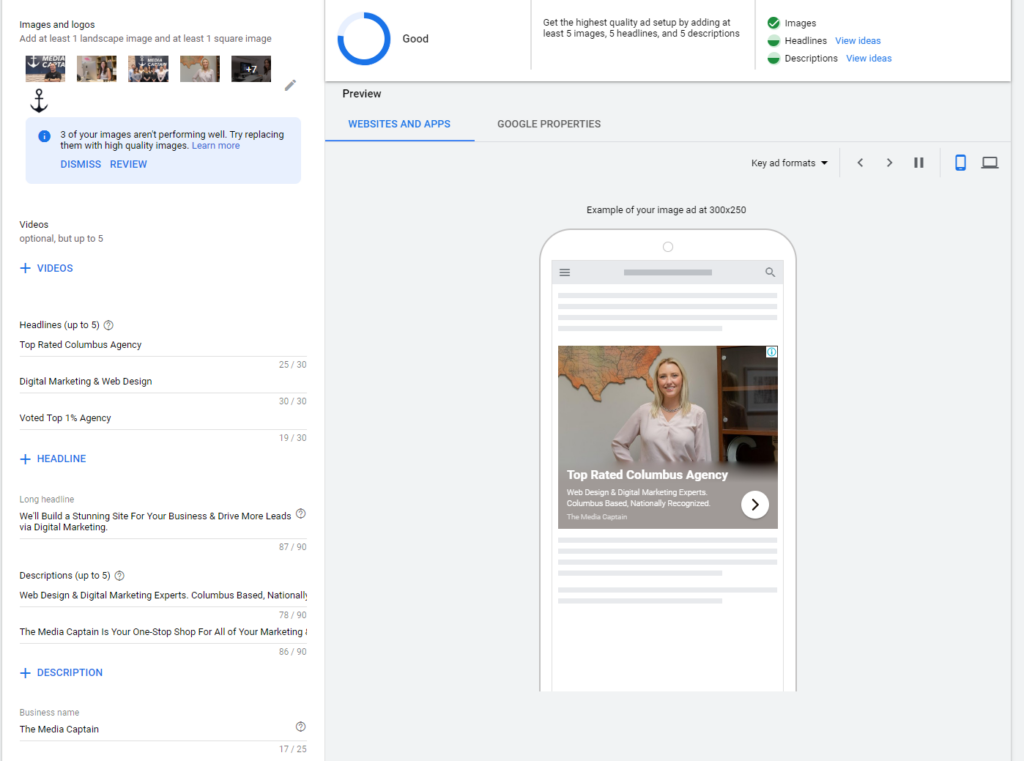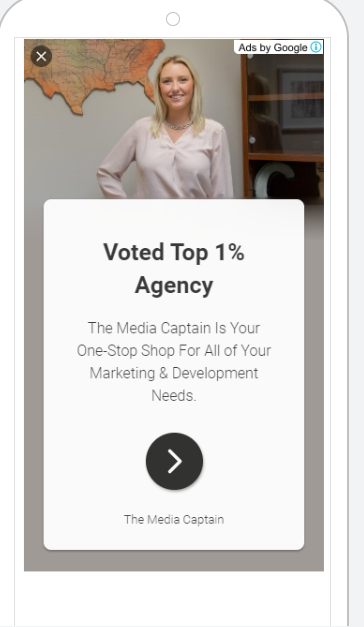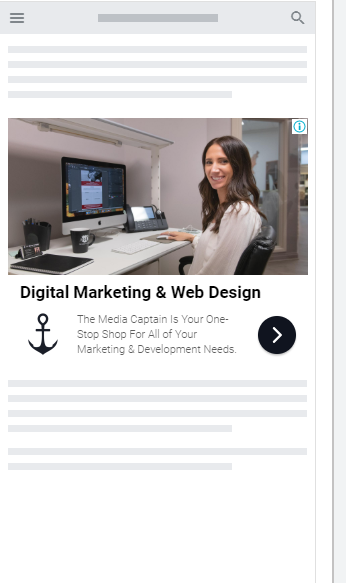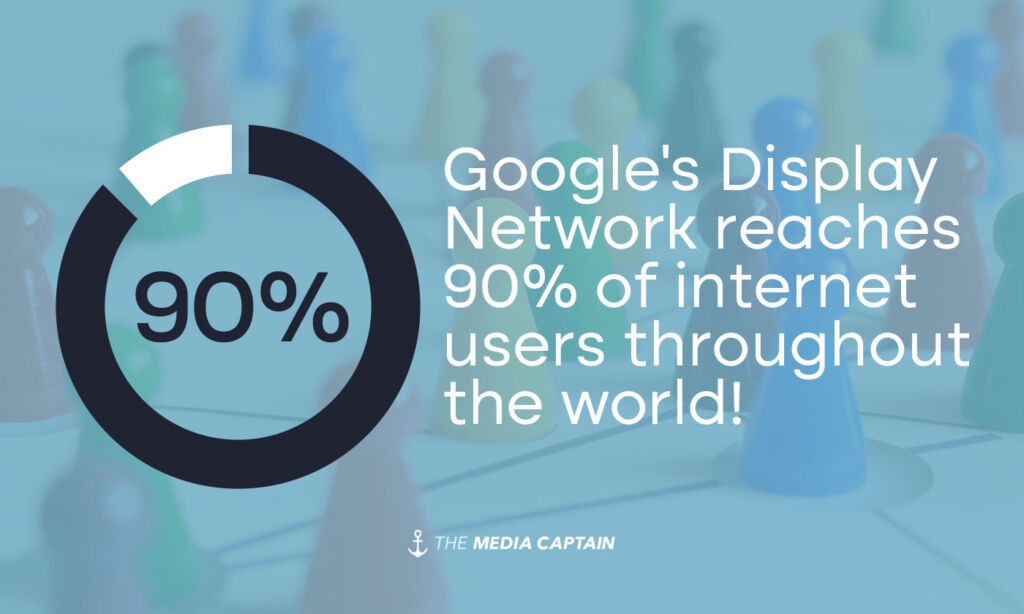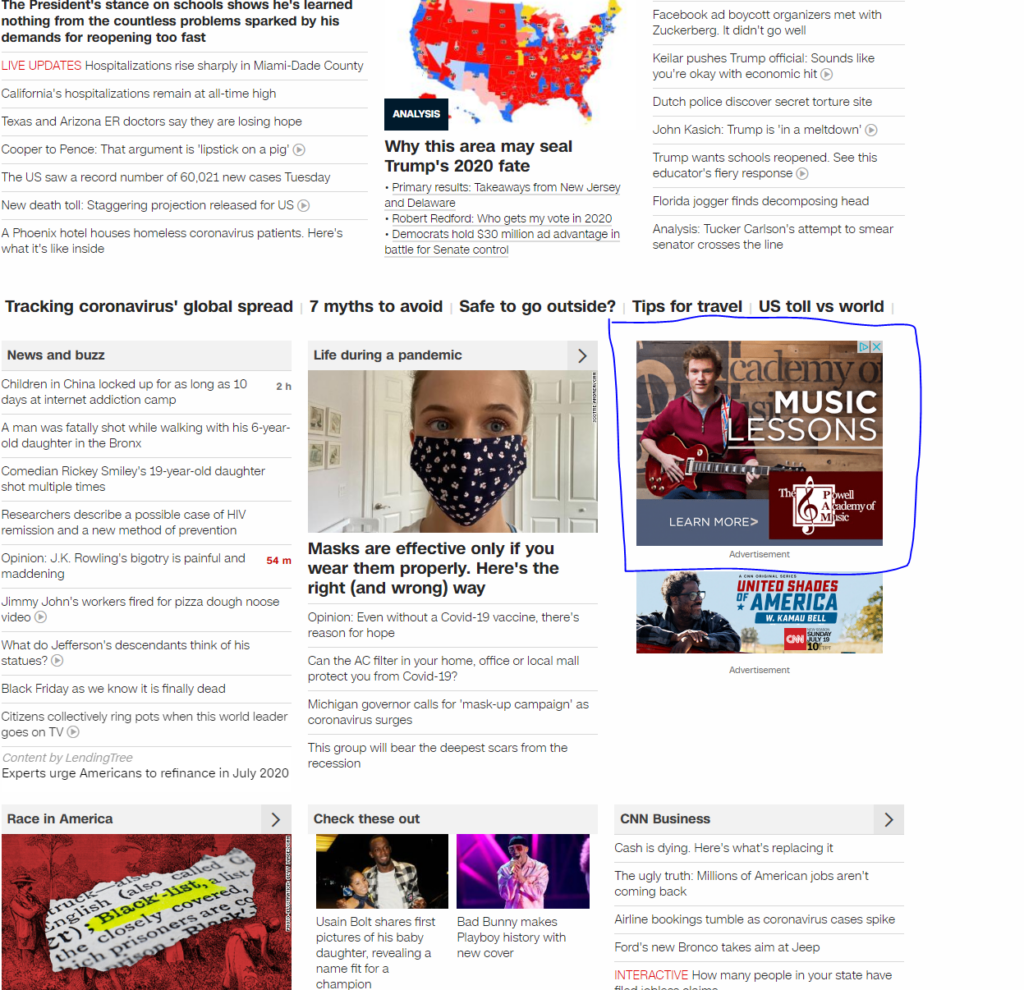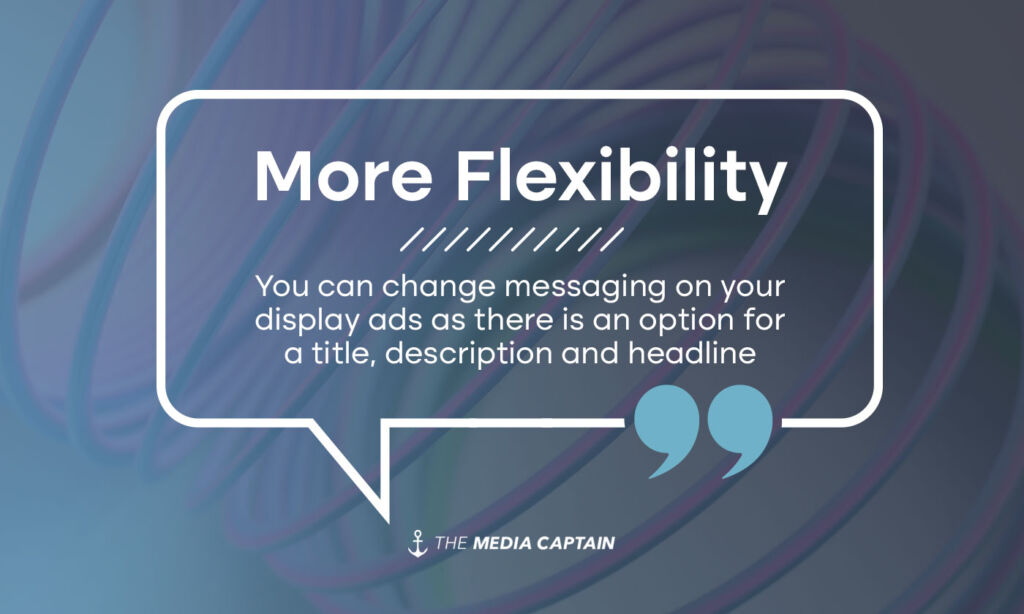Google took a book out of Facebook’s playbook and made it easy and attractive to create display ads. No longer do you need to work with a graphic designer to ensure your display ads are compelling. With Google’s responsive display ads, any marketer or business owner can set these powerful ads up in minutes.
Google likely saw how easy it was for advertisers to create beautiful yet simplistic ads on Facebook’s platform and pivoted so their display network had a similar approach.
What is a Google Responsive Display Ad?
A responsive display ad automatically and easily adjusts in size, appearance and format to fit available spaces on Google’s Display Network [source].
In order to create a responsive display advertisement, you must take the following steps:
1 – Login to your Google Ads Account
2 – Create a New Campaign
3 – Select “Website Traffic” and then Select “Display”
4 – Choose “Standard Display Campaign
5 – Enter Your Businesses Website Address
Below is a screen shot that will show that you’re in the right place. If you want all of the steps of setting up responsive display ads, you can follow THESE STEPS.
What Does The Set-Up Process Look Like?
Below is an example of what a responsive display advertisement would look like when you are logged into your Google Ads account. On the far right is what the advertisement will look like. On the left is the information that’s required, which consists of the following:
- Images and Logos (Add at least 1 landscape image and at least 1 square image)
- The logo should be 180×180 so you may need design help to resize your logo
- You have the ability to crop photos once they’ve been uploaded
- We recommend uploading multiple images so your creative doesn’t get stale. Google will actually tell you which ads are performing well.
- Headlines (up to 5)
- We like using multiple headlines so people don’t get served the same messaging
- Long headline (90 characters)
- The long headline is the first line of your ad, and appears instead of your short headline in larger ads.
- It should be noted that the long headline gets the least amount of exposure versus the headline and description. This is a good place for secondary messaging for your advertisement. You can see in our advertisement, the first description is getting pulled in and not the long headline.
- The long headline is the first line of your ad, and appears instead of your short headline in larger ads.
- Description (up to 5)
- The description is typically what will populate underneath the headline in a responsive display advertisement. This should be a more detailed unique selling proposition of your business. You can see in our advertisement we wanted to provide the services we offer, which are web design and digital marketing, so we included this in the description. Whereas the headline we had less space so we alluded to that we’re a “Top Rated Columbus Agency.”
- Business Name
- This is self explanatory. Keep in mind you are only allowed 25 characters
More Examples of Responsive Display Ads
We wanted to showcase our different team members so after someone visited our site or spoke with a representative of our team, they became familiar with the faces behind The Media Captain. Below you can see different advertisements of one of our graphic designers and one of our strategists.
You can see how different images are used and different variations of the text based on the size dimension from Google’s Display Network.
Understanding Google’s Display Network
It’s important to understand how Google’s Display Network works. This knowledge will allow your business to better see through your entire advertising strategy.
Google’s Display Network is a powerful network of more than 2 million websites, videos, and apps where your ads can appear. These networks reach 90% of internet users throughout the world! [source]. Many people assume Google is a powerhouse due to its pay-per-click advertisements. They don’t realize the reach and depth Google has with its display network.
Related Blog: How to Drive Instant Traffic to your Site Using Google PPC
Example
When you visit a site like ESPN.com or CNN along with millions of other sites, there are places on those sites that allow advertisers to showcase their brand through display advertisements. In the past, you had to create specific size formats for display ads to populate, such as the following dimensions below.
- Medium Rectangle (300 x 250)
- Large Rectangle (336 x 280)
- Leaderboard (728 x 90)
- Large Skyscraper (300 x 600)
Below you can see an example of one of our clients display ads, Powell Academy of Music, outlined in blue. Their advertisement is populating on CNN.com and it was set-up through Google Ads and is getting served on Google’s Display Network. Since CNN is one of the two million sites that partners with Google for their display network, since I visited the Powell of Academy website, I’m not getting served their advertisement.
I can’t explain to you how many times our agency and our clients have been asked, “How much do you spend on advertising? I saw your ad on CNN.com!” The answer to that question is not much when you are running retargeting advertisements. For retargeting, the ads are only getting served AFTER people visit your site. For the Powell Academy of Music advertisement, IF someone clicks on the ad showcased, it would likely only cost them $0.60 – $0.70.
What are the benefits of Google’s responsive display advertisements?
You should now have a better understanding of what a responsive display advertisement is and how you go about setting it up through Google Ads. You should also have a better idea of what Google Display Network is all about and how this ad network allows for your ads to get massive exposure.
What are the main benefits of Google’s Responsive Display Ads?
- Saves Time
- You can set this up yourself without relying on a designer. The ease of use is a huge upgrade over standard display ads.
- More Flexibility
- You can change messaging on your display ads as there is an option for a title, description and headline.
- There is the ability to split test messaging.
- There is the ability to split test different imagery.
- Easy Image selection
- You can easily upload 5+ images and have a diverse set of pictures for your display ads.
- Google will tell you the ads that are under-performing and you can make adjustments accordingly.
- Google will also find recommended images that are free to use.
- Retargeting Diversification
- It is now easier to retarget to different pages on your site with various messaging and image selection based on the page the person visited.
- Exposure
- There is the ability for your advertisements to populate on more sites based on the responsive nature of the advertisements.
In Closing
There is still the option to upload display advertisements to Google Ads based on specific size dimensions. This gives designers the ability to get more specific with their ad creative and more detailed based on certain brand standards. If your business wants your advertisements to look and feel a certain way, responsive display ads may not be the best option.
If you want a quick solution that still allows for great display ad creation, look no further than responsive display ads.


